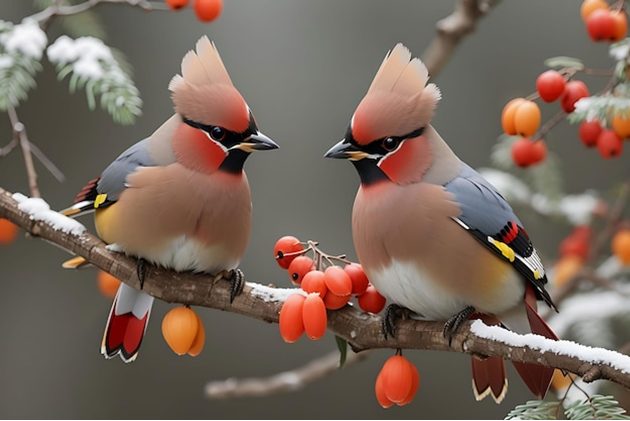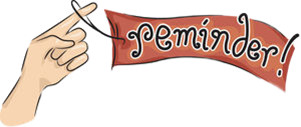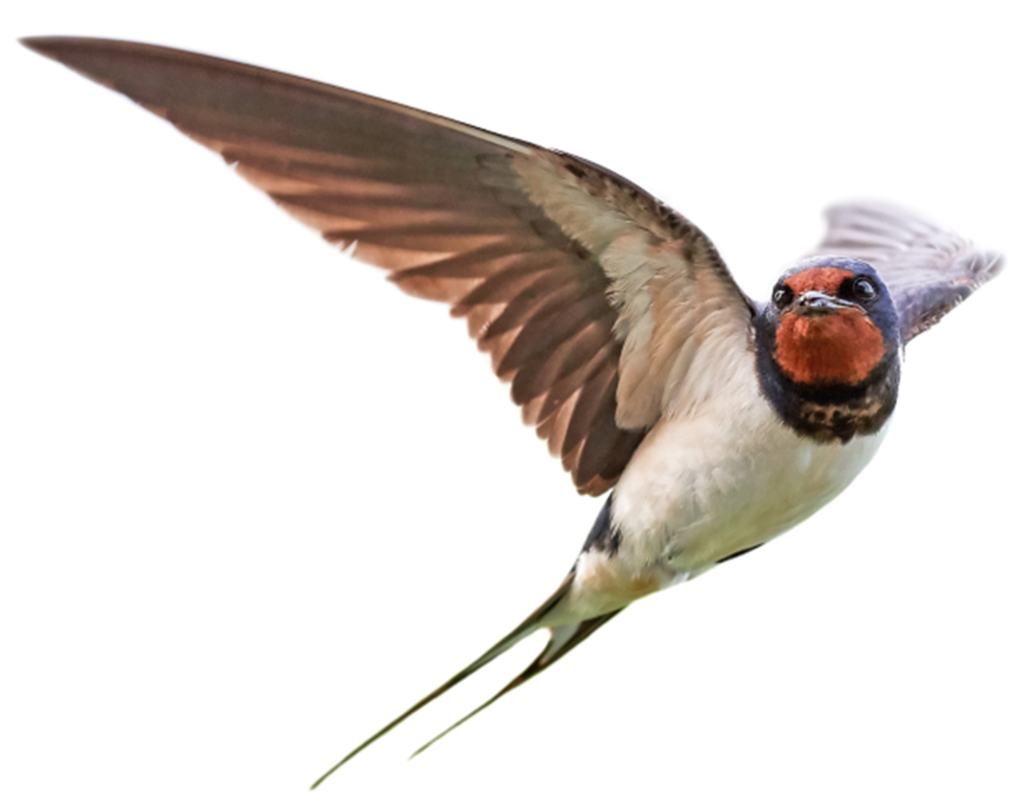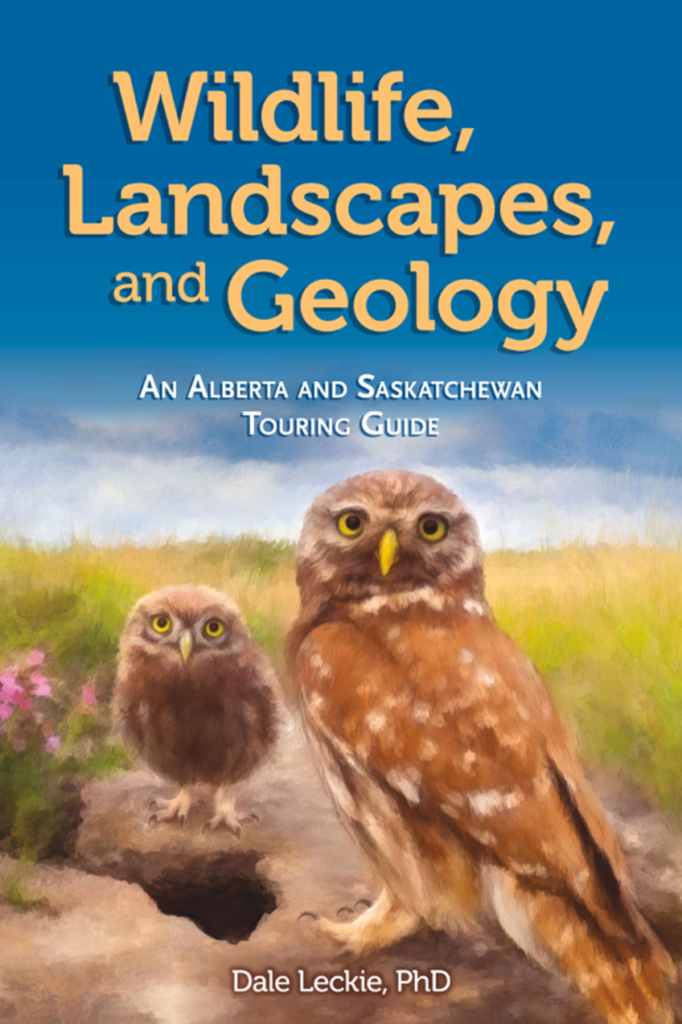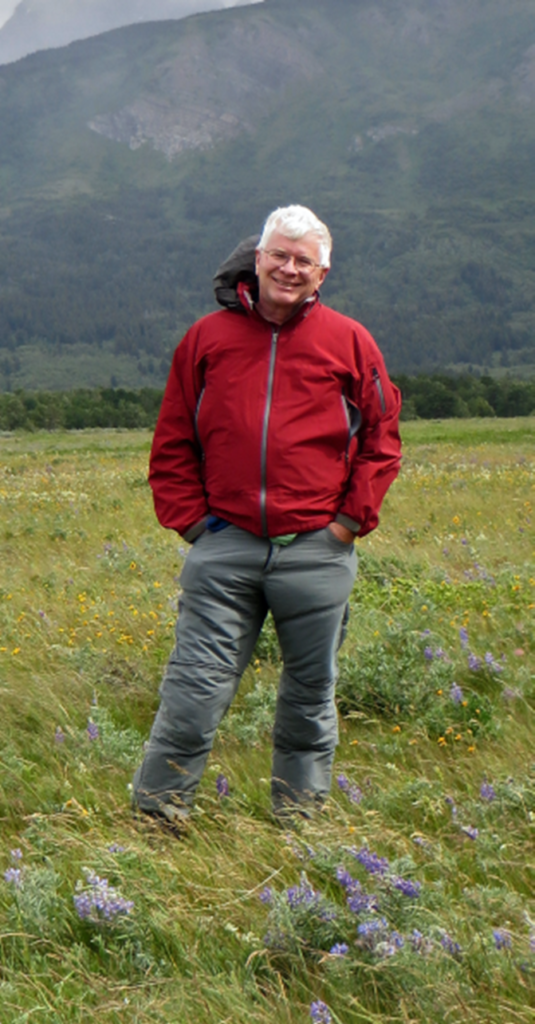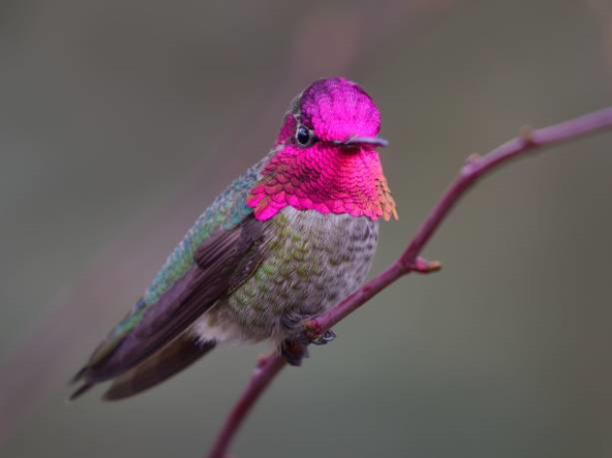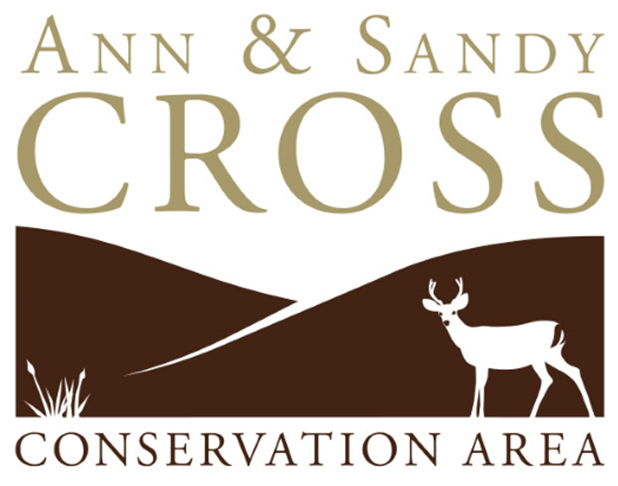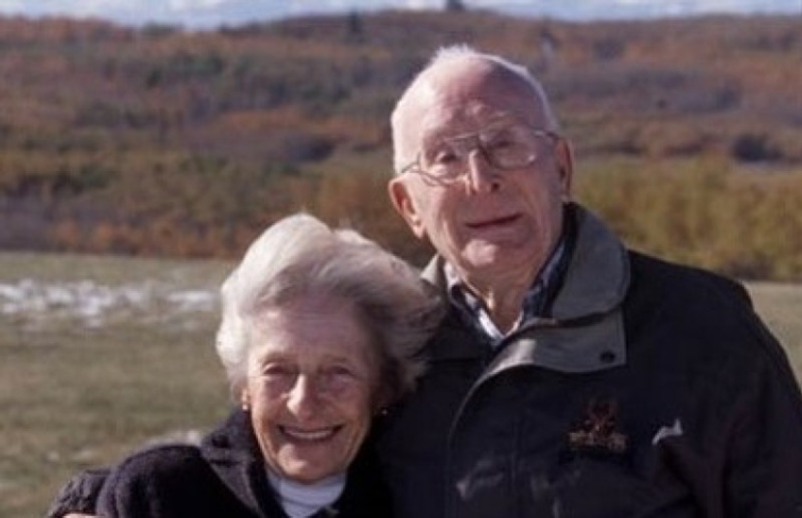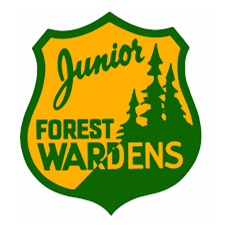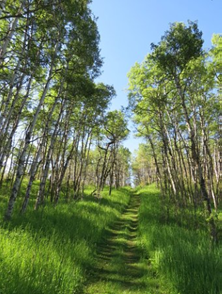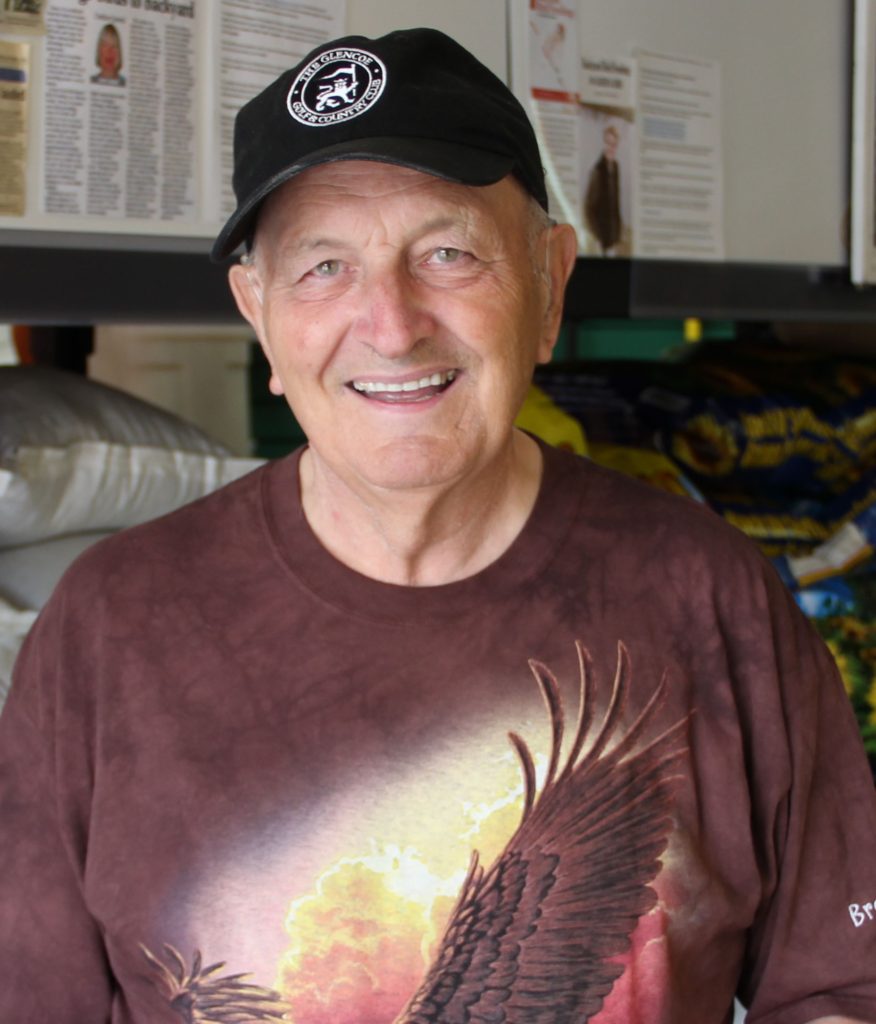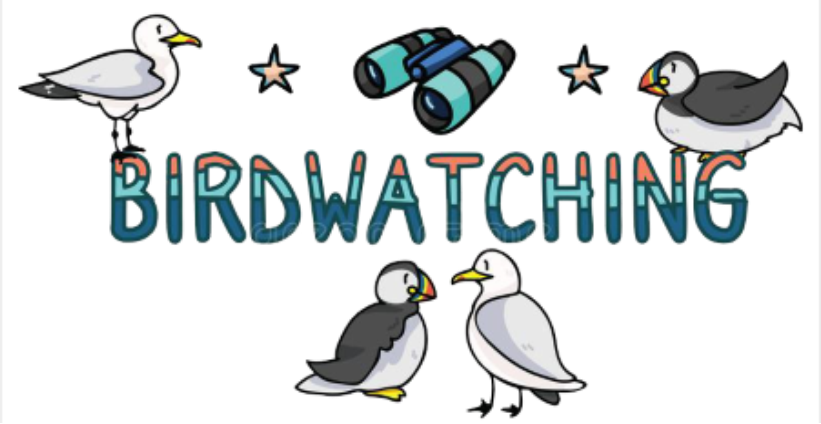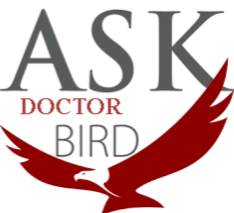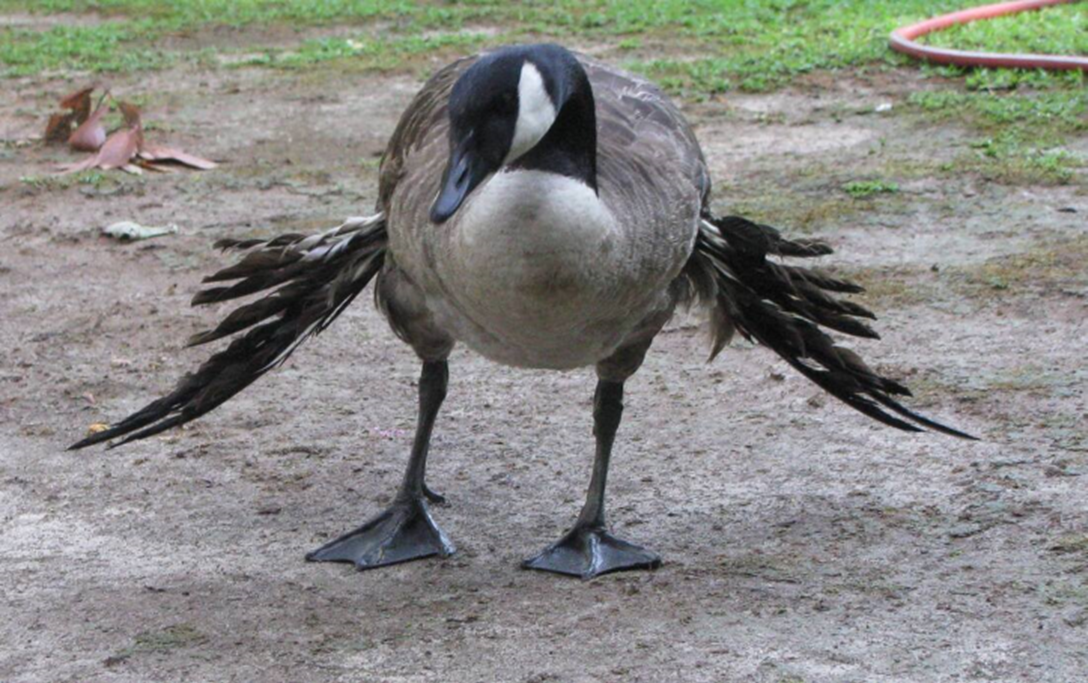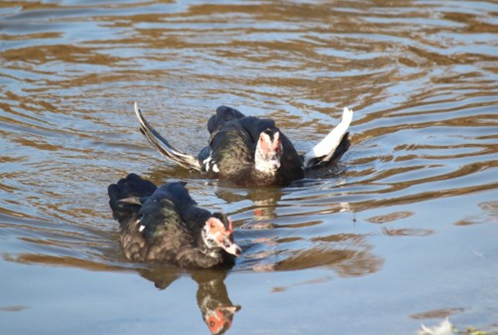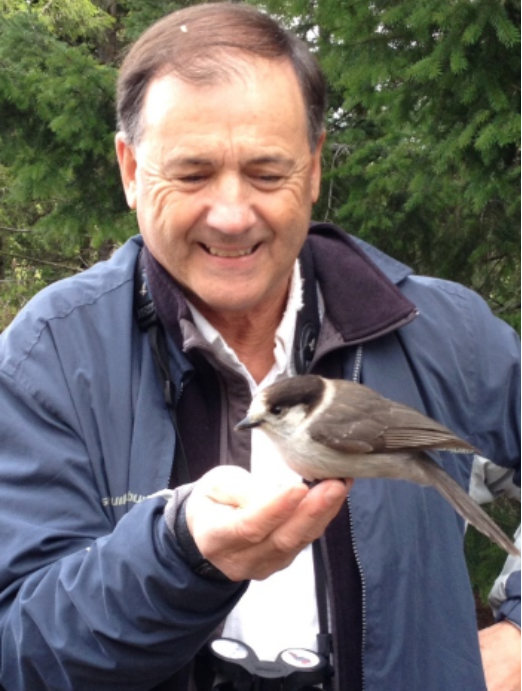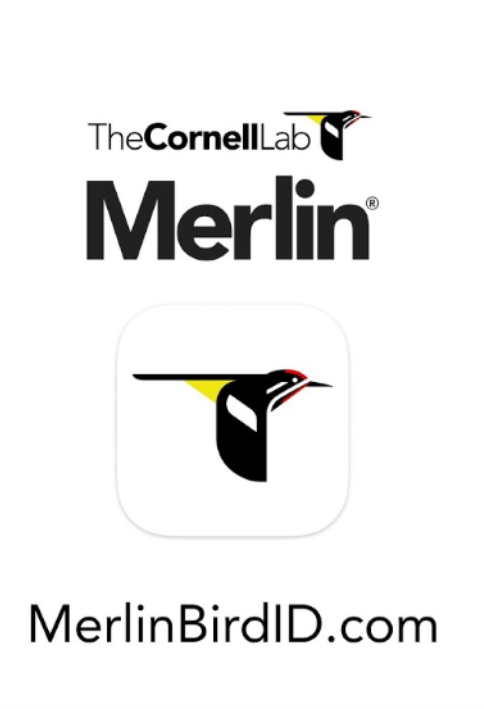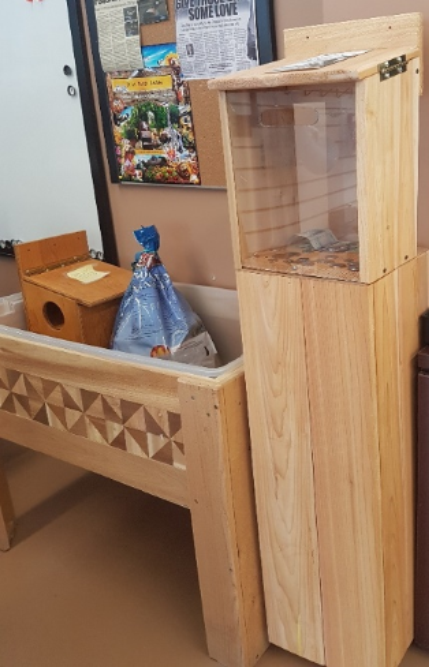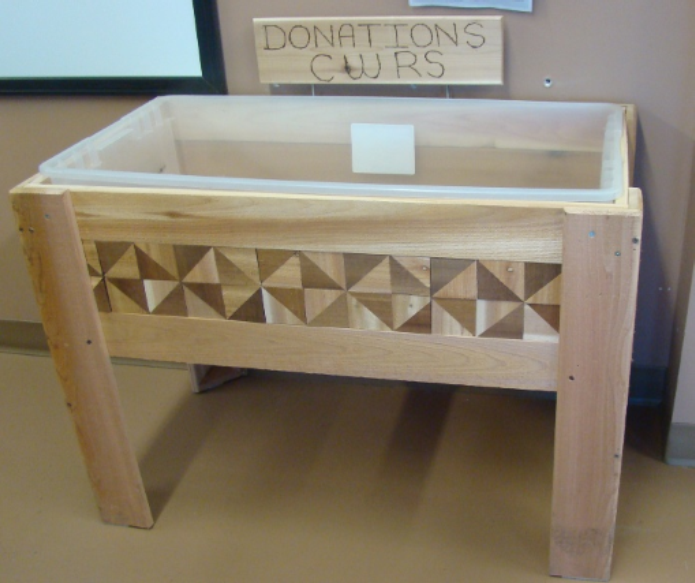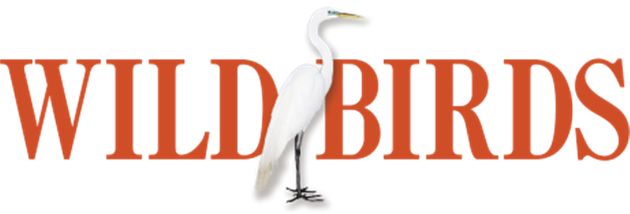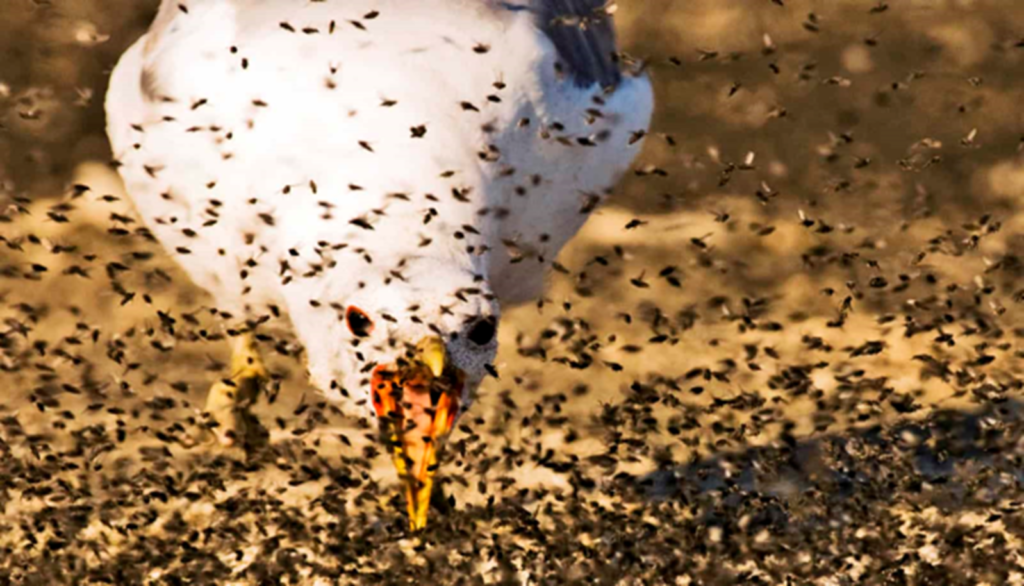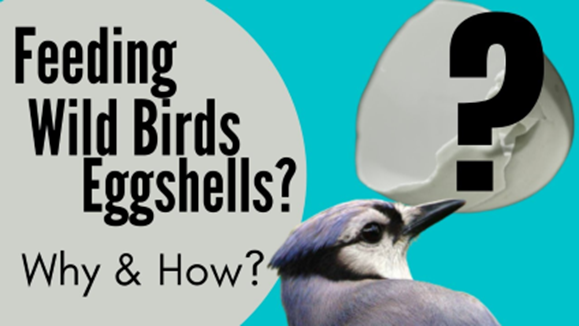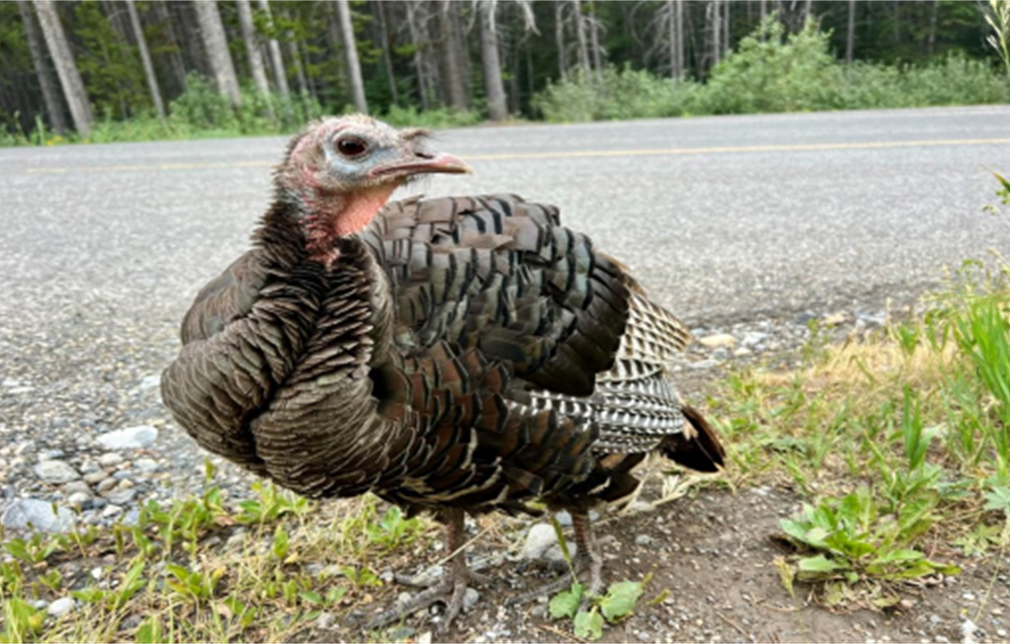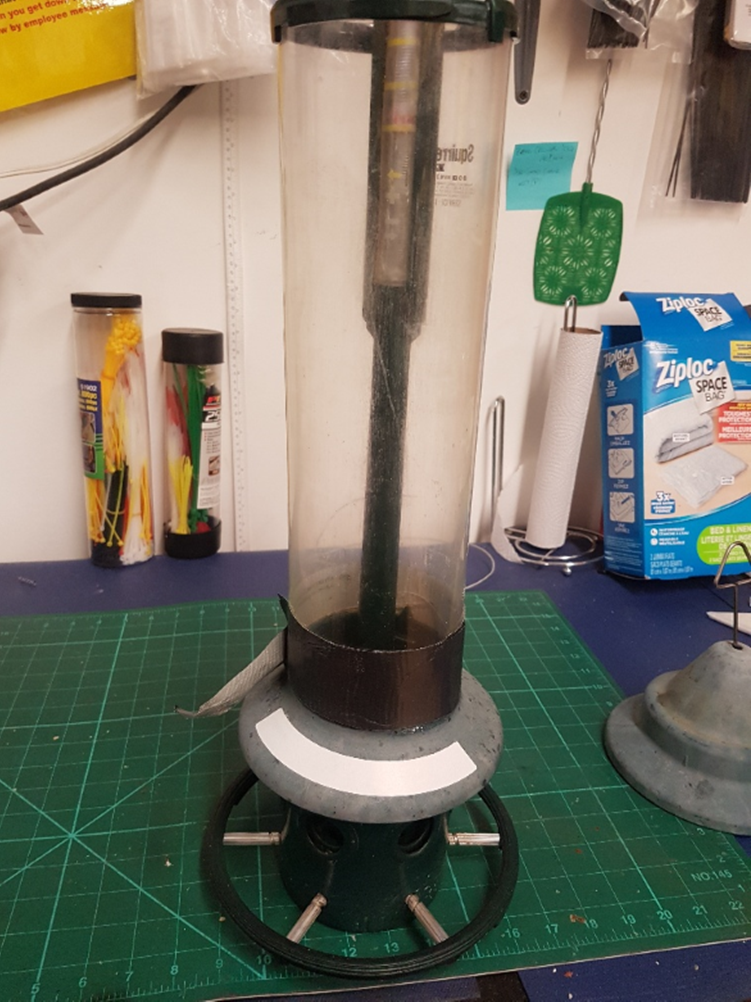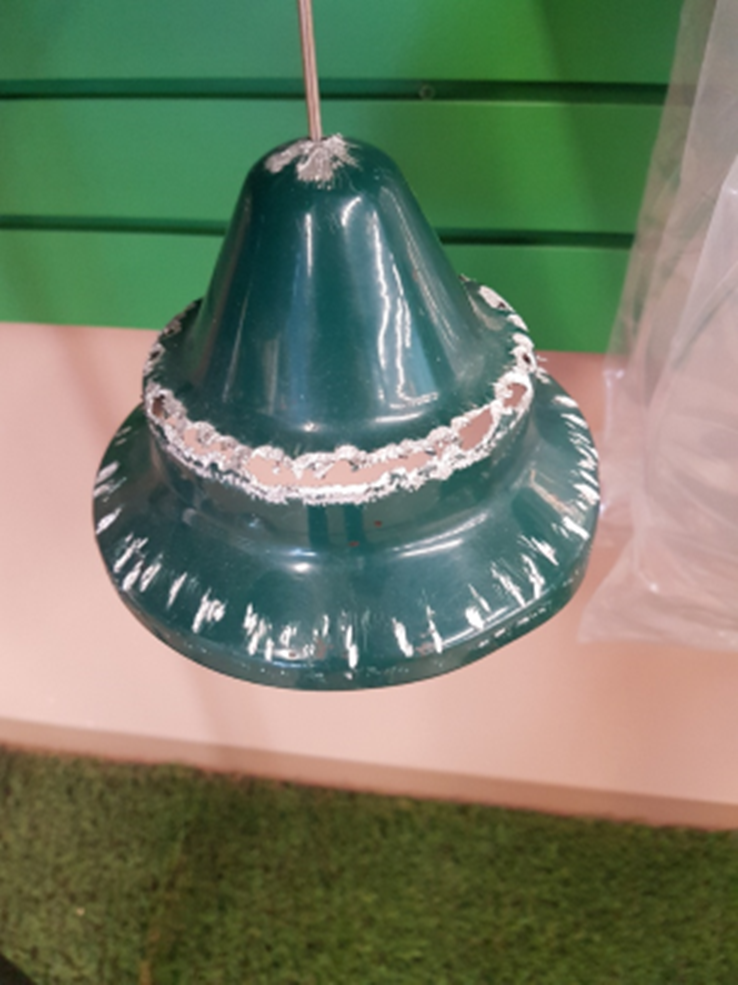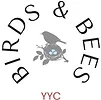LINK TO PDF NEWSLETTER DOWNLOAD

October 2024

TRUE to their name, Bohemian waxwings wander like bands of vagabonds across the northern United States and Canada in search of fruit during the non-breeding season. High-pitched trills emanate from the skies as large groups descend on fruiting trees and shrubs at unpredictable places and times. These regal birds sport a spiky crest and a peach blush across their face. Unlike the familiar Cedar waxwing, they have rusty feathers under the tail and white marks on the wings.
THE bohemian wanderings of this waxwing make them a little unpredictable to find. The best place for most people to see them is during migration and winter (September—March) in the northern United States and Canada, when they come south from their breeding range and move around in search of fruit. Check dense patches of fruiting shrubs like mountain ash and listen for their high-pitched trills. Watch the skies for tight flocks that descend en masse towards fruiting trees and shrubs. If you see or hear a group of American robins or Cedar waxwings, check the flock for Bohemian waxwings as they sometimes flock together.
BOHEMIAN waxwings are fruit connoisseurs, so planting a native tree or shrub that holds its fruit late into the fall and winter may bring in any that pass through your area.
= Bohemian waxwings, unlike many songbirds, do not hold breeding territories, and they also don’t have a true song. Bohemian waxwings communicate with high-pitched calls as they roam around in large groups looking for fruit
= Only three species of waxwings exist in the world: the Bohemian of North America and Eurasia, Cedar of North America, and the Japanese of eastern Asia
= Bohemian waxwings have an uncanny ability to find fruit nearly everywhere, almost like they have a GPS tracker for berries. Flocks sometimes turn up in desert areas, find an isolated shrub, devour its fruit in minutes, and move on
WINGS OF CHANGE – Part FOUR:
NAVIGATING WESTERN’S CAMPUS
What the birds are telling us about climate change
Story by: Kurt Kleiner Western Alumni Magazine Spring 2024
Biology PhD candidate Brendon Samuels books beyond the building, walkways and greenery, see through the eyes of a bird in flight.
Take windows, for example. To a human, the International and Graduate Affairs building is easy to see—an attention getting modernistic box made mostly of reflective glass. For birds flying between the Thames River and nearby woods, it might as well be invisible.
A few years ago, Samuels routinely collected birds that had died there after hitting windows they couldn’t see. He estimated at the time that the building killed 150 birds a year. “They just don’t understand what glass is. They never really encountered a reflection before in nature. Often their first encounter is a lethal one.” Samuels says.
In fact, collisions with windows are estimated to kill more than a billion birds every year in North America and are one of the most common human made causes of bird deaths.
For his PhD, Samuels studies pre-collision behaviour and tested how birds perceive windows, and how to create the most effective window treatments to make windows visible to them.
It turns out the bird-shaped stickers many people place on windows to make them visible don’t really do much. “What we find is that if you put one or two stickers up on your window, a bird is just going to fly around the stickers and hit the glass,” he says
On the other hand, patterns with spaces of no more than five centimetres will signal to even the smallest bird that there is no space to fit through.
Over the past few years, Samuels has worked with the university to identify problem buildings and treat the windows with coatings the birds can see and avoid.
He says this has drastically reduced bird strikes, and the university has committed to making all new buildings bird safe and is working towards retrofitting existing windows with the protective film.
It may be surprising that the grids of pencil-sized white dots make a difference. From a distance, it’s difficult for human eyes to detect them, and even up close they don’t stand out. But for birds the dots make all the difference.
Working with the City of London, Samuela is advocating for development planning bylaws to require bird-safe building design. And he has been working with the non-profit organization FLAP (Fatal Light Awareness Program) Canada to advocate for Bill 145, a policy that would incorporate bird-safe building design into the Ontario Building Code.
“Like a lot of issues in conservation, I actually think we have enough knowledge. We know what the solutions are. At least enough so we can take decisive action through policy and systems change to achieve the goals of conservation,” Samuels says.
The Wild Bird Store hopes you have enjoyed this 4 part article and recognize the Alarm Call the birds are sounding
Wildlife (mostly birds), Landscapes, and Geology: Exploring Connections
If you want to view wildlife in spectacular landscapes, it helps to know a bit about the local geology. From rugged mountains, to the rain shadow of the prairies, to deeply entrenched rivers, and glaciated terrain, geology strongly impacts wildlife habitat.
Golden eagles soaring mountain peaks, Harlequin ducks feeding in the “kickpoint” of a river, and Burrowing owls on glaciated plains in the rain shadow of the Rockies are some of the birds Dale will discuss. Dale will also explore how geology influences the distribution of mountain goats, bighorn sheep, pikas, greater short-horned lizards, and pronghorn antelope. Join Dale for an informative and engaging event to investigate the close relationship between wildlife, landscape and geology.
Wednesday October 16, 2024
2:00pm and 6:00pm
Price per ticket: $20.00 + GST Choose ticket button below.
Anna’s Hummingbird
Was named for the French Princess Anna de Belle Massena. Married to a French prince and amateur ornithologist, Princess Anna apparently caught the eye of naturalist René-Primevere Lesson, who named the hummingbird in her honour.
“Our land is more valuable than your money. It will last forever. It will not perish as long as the sun shines and the water flows, and through all the years it will give life to men and beasts. It was put there by the Great Spirit and we cannot sell it because it does not belong to us.”
– Chief Crowfoot, Chief of the Blackfoot Nation
We would like to acknowledge that the Ann & Sandy Cross Conservation Area is on the traditional territory of the Blackfoot Nations, which includes the Siksika, the Piikani, and the Kainai. We also acknowledge the Tsuut’ina and Stoney Nakoda First Nations, the Métis Nation (Region 3) and all peoples who make their homes in the Treaty 7 region of Southern Alberta.
Early Beginnings
Sandy was born Alexander Rothney Macleod Cross on April 11, 1914 to Alfred Ernest (A.E.) Cross and Helen Rothney Macleod. A.E. was a prominent Alberta rancher, brewer, and politician who started ranching in 1886 at the Cross family’s A7 Ranche in Nanton. Helen was the daughter of Colonel Macleod and was the first Caucasian to be born at Fort Mackeod. Growing up, the Cross family split time between the ranch and the Cross house in Inglewood. Following in his family’s footsteps, Sandy began purchasing land south of Calgary in 1945 for what would become Rothney Farm (named after his Mother). As the son of one of the Calgary Stampede’s “Big Four,” A.E. Cross, Sandy was known around Calgary as coming from a long line of cattlemen. Others would comment on his love for and connection to the rolling foothills he grew up on.
A Lasting Legacy
Ann Abbott captured the heart of Sandy, a long-time bachelor, and in 1974 they were married. As they settled into life on Rothney Farm together, they watched the expanding City of Calgary approach, and new acreages divide the farmland around them. Concerned about what the future held for the land, they decided to act. In 1987, Ann and Sandy donated nearly 2000 acres of their land to the Province of Alberta. At the time it was the largest private land donation in Canadian history. Ann and Sandy wanted the land to be preserved the way it was for future generations to enjoy. The Nature Conservancy of Canada (NCC) operated the area to ensure it was managed according to their vision. Funds were raised in 1991 to build the education centre, Belvedere House, and support the education programs at the Cross Conservation Area. In 1996, Ann and Sandy Cross donated another 2,800 acres of land, for a total of 4,800 acres or 12 square kilometers. That year the Sandy Cross Conservation Foundation was created to manage the Conservation Area independently of the NCC.
Ann Cross passed away at the age of 92 on January 20, 2013; and Sandy Cross passed away at 89 years of age, on December 13, 2003.
Conrad Taylor, a former junior Forest Warden (JFW), and Reg Rempel, Habitat Manager of the Ann & Sandy Cross Conservation Area (ASCCA), saw an opportunity for a partnership between JFW and ASCCA. The desire was to return the forest to land logged in the 1940s and since used to graze cattle. This project will help restore the Pine Creek watershed. As a Conservation Area, this land will remain protected and preserved, not subject to development.

All participants on any bird walk must have purchased a ticket through our website – www.wildbirdstore.ca and present the ticket to Jim prior to the bird walk. The weather plays a big part in bird walks and Jim reminds participants to dress anticipating weather changes and to carry water to keep hydrated.
Saturday, October 12, 2024 Carburn Park
9:00am Meet in Carburn Park parking lot. Please dress for weather changes and bring water !
Saturday, October 26, 2024 Eagle Watch Day Trip
9:00am Leaving from Wild Bird Store rear parking lot. Bring a Lunch!
NOTE: All vehicles require Kananaskis day or year pass. We can stop at visitor Center at park entrance to purchase one if needed. It is a per vehicle pass so carpoolers can share in cost of day pass if driver doesn’t have a valid year pass.
( I have a year pass so any passengers (3) I have are free.)
NORTH GLENMORE PARK : Saturday November 9, 2024
9:00am meet in parking lot “C” overlooking the reservoir. Please dress for weather changes and bring water !
INGLEWOOD BIRD SANCTUARY Saturday November 23, 2024
9:00am meet in parking lot “C” at Nature Center. Please dress for weather changes and bring water !
CARBURN PARK Saturday, December 7, 2024
9:00am meet in parking lot. Please dress for weather changes and bring water !
SNOWY OWL PROWL—1st DAY TRIP Saturday January 11, 2025
BEBO GROVE Fish Creek Park Saturday January 25, 2025
SNOWY OWL PROWL—2nd DAY TRIP February 8, 2025

We offer a discount if you return your 20 LB or 40 LB seed bags so that we can re-use them (sorry—not the Mother Nature bags which we cannot re-use), suet ball containers, or if you bring your own container or bag to fill . This discount is in addition to any other discount offered.
Response:
When I was first asked about this, I immediately thought of that awful image of powdered wings spread out on a window caused by a bird fatally colliding with glass. But what we are really talking about is a syndrome that affects mostly aquatic birds like geese or ducks and more males than females. Instead of the bird’s wing tucked against the body, the last joint is twisted such that the primary feathers point out laterally, creating an appearance of an angel’s wings. It is anything but angelic! Also know as dropped wing, crooked wing, airplane wing or slipped wing, this condition is acquired in youngsters where-upon one or both of the wrist joints are delayed in development relative to the rest of the wing. It is not pretty sight either. It is easily recognized by stripped flight feathers in the wings and/or these feathers protruding at odd angles. The worst news of this incurable condition is that it precludes flight and usually leads to death. Some folks have tried to link this syndrome to feeding bread to the birds, but there is no scientific evidence to prove this. It is more likely caused by genetics and/or excessive intake of carbohydrates and proteins combined with insufficient consumption of vitamin E, manganese and/or calcium.
David M. Bird, Ph.D., Emeritus Professor of Wildlife Biology, McGill University www.askprofessorbird.com

David M. Bird is Emeritus Professor of Wildlife Biology and the former Director of the Avian Science and Conservation Centre at McGill University. As a past-president of the Society of Canadian Ornithologists, a former board member with Birds Canada, a Fellow of both the American Ornithological Society and the International Ornithological Union, he has received several awards for his conservation and public education efforts. Dr. Bird is a regular columnist on birds for Bird Watcher’s Digest and Canadian Wildlife magazines and is the author of several books and over 200 peer-reviewed scientific publications. He is the consultant editor for multiple editions of DK Canada’s Birds of Canada, Birds of Eastern Canada, Birds of Western Canada, and Pocket Birds of Canada. To know more about him, visit www.askprofessorbird.com or email david.bird@mcgill.ca.
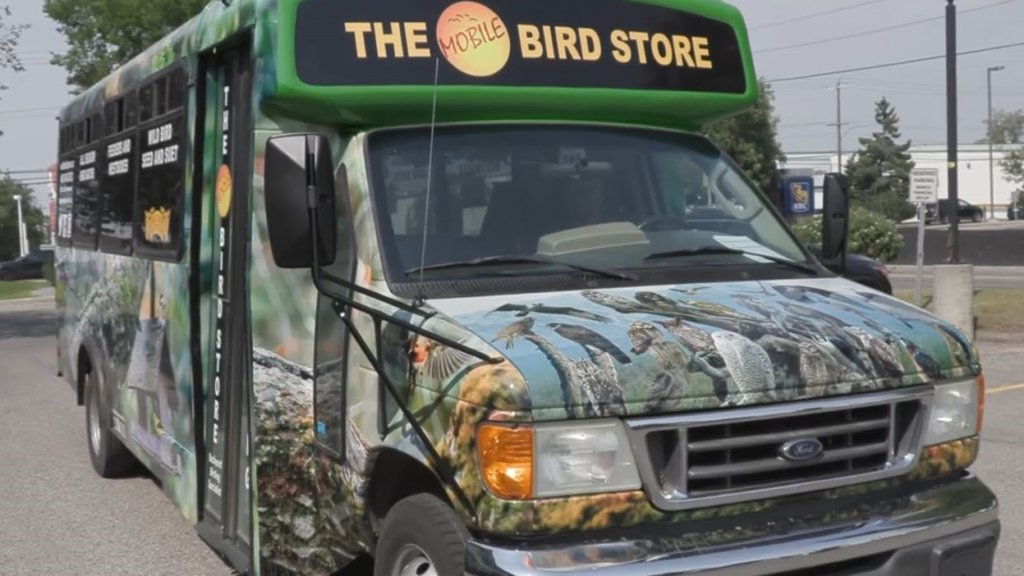

Wildwood Community Centre (4411 Spruce Drive SW): Every Tuesday 3:00pm to 6:00pm
STARTING NOVEMEBER 5, 2024 WE WILL BE CHANGING THE HOURS AT WILDWOOD TO 3:00-5:30PM FOR THE WINTER. THANK YOU FOR YOUR CONTINUED SUPPORT.
Crowfoot Arena (corner of John Laurie & Nosehill Drive NW: Every Wednesday 2:00pm to 5:30pm
Please place orders by 12:00 noon the day before the truck is on location
Text us @ (403)701-4571 OR email us at orders@wildbirdstore.ca
Earn and redeem customer loyalty points on the Mobile Seed Truck

DELIVERY: Deliveries will still be made on Thursdays ONLY. Please phone the store at (403) 640-2632 any day prior to 12:00 noon on the Wednesday before your delivery; place and pay for your delivery. Please phone with your order as early as possible to avoid disappointment. If you have any special instructions please do not forget to inform us when you place your order.
PLEASE NOTE: WE WILL BE BACK TO EVERY WEEK DELIVERY ON THURSDAYS STARTING OCTOBER 3/24
THE DELIVERY CHARGE WILL BE $10
MINIMUM ORDER FOR DELIVERY $25.
Do you need help attracting birds to your backyard?
Do you want advise on designing a backyard habitat for your feathered/winged friends?
Do you have a problem in your backyard we can help solve?
The Wild Bird Store in partnership with Andrew Barnes, now providing at home wild bird consulting service.
Specializing in helping you and your property become Wild Bird friendly for maximum results.
Services offered will include:
Bird feeder(s) recommendations for species focus and seed types
· Type(s) of seed and for which species it will be best suited
· Preferred location for maximum results
· Bird feeder accessories
· Hummingbird feeders and accessories
Nesting
· Nest box selection for native species—including all cavity nesting and platform species for Alberta
· Preferred location for nest boxes
· Maintenance tips
· Advice on how to deter invasive species (House sparrows and European starlings)
Watering needs
· Bird baths
· Heaters and heated baths
· Accessories including drippers and bubblers
· Location dos and don’ts
· Maintenance tips
Bat Houses/Chambers
· Location requirements
· Housing styles—including single vs multiple chambers
After each visit all discussion points and recommendations will be provided along with a 10% OFF coupon to be used at the Wild Bird Store on your next purchase.
PLEASE NOTE: 10% coupon is only valid for a one-time purchase and must be presented at time of purchase. In-store ONLY. ( All Discount restrictions apply)
For further information, pricing and scheduling, please contact
Andrew Barnes cell # (403) 923-8121 (call or text)
Email: birdsbeesyyc@gmail.com
Have you checked out the Merlin app? Would you like a demonstration on how they will help you to identify birds? Stop by The Wild Bird Store during regular business hours and staff will be happy to show you how the app will enable you to identify birds in various ways.
Identify Bird Songs and Calls
Identify Birds by your Photos
Save Birds to Your Life List
Explore lists of birds near your location
DONATIONS
Located at The Wild Bird Store (near the seed bins). We collect your cash as well as “wishlist” donations and arrange to deliver them to local wildlife organizations including Calgary Wildlife Rehabilitation, Alberta Institute of Conservation and Ellis Bird Farm.
We ask for your support quarterly for each of these organizations.
For September, October, and November, 2024 your donations will go to:
Ellis Nature Center (Ellis Bird Farm)
Thank you for your support
Recently in the skies above Calgary, gulls, including Franklin and Ring-billed, have been swarming to take advantage of an explosion of flying ants. After all, birders know wild birds will always take advantage of a free food source!
Flying Ant Buffet by Kevin Van Tighem July 4, 2022

The Maligne River drops out of a hanging valley to rendezvous with the Athabasca. The narrow, deep canyon it has carved there is a popular attraction for visitors to Jasper National Park. Those who linger into the evening are sometimes treated to the sight of graceful, long-winged birds tilting down out of the darkening sky and vanishing into the shadows below.
Those are Black swifts, a rare species that nests only in places with very high humidity, low temperatures and day-long darkness. Alberta has fewer than 10 Black swift nesting areas, all in deep mountain canyons, caves or behind cascades. In the mountain parks, those include Maligne and Johnson canyons. There, the swifts build nests of moss, lay a single egg and raise a single young each summer.
Swifts feed only in the air. Like Franklin’s gulls, they have an uncanny sense of where to find swarming insects, often travelling tens of kilometres to gorge themselves on bugs. Flying ants are a favourite—easy to catch and highly nutritious.
Biologist Geoff Holroyd, who has made a life study of aerial-feeding birds, suspects that swifts nest in such seemingly hostile environments not just to avoid predators, but also because their young have to wait so long between meals: swifts feed their offspring only once or twice during the day. Young swifts apparently conserve energy by going hypothermic between meals of protein-rich ants.

With some woodpecker species, such as Downy woodpeckers for example, it is fairly easy to distinguish the male from the female. The male Downy has a red spot on the back of his head, while the female doesn’t. This is not the case with Flickers, as both sexes have red spots. But the males have something the females don’t. They have a black streak, or a “mustache” on each side of their beaks. The females have no such mustache. Ornithologists refer to this as the “malar stripe.”
Like most birds, Flickers have elaborate courtship displays, but the Flicker dance is less about territory defense. The dance is mostly common in the spring, when birds are defending their mates and nesting territories. It typically takes place when a mustached male Flicker tries to move into another couple’s territory. The intruder is met by the resident male, who confronts him in a stare down. The two birds stand a few inches apart, just glaring at each other, with their beaks pointing skyward. At first nothing much happens, but then one bird begins to move its head from side to side, which causes the other bird to do the same thing. Without making contact, they continue to wave their long beaks back and forth. From a distance the birds look like tiny Jedi Masters having a lightsaber duel..
As things become more intense, the birds will flash the red under their wings and tails, and make their distinctive “wicka, wicka” call. Occasionally, physical contact takes place, but usually one bird gets bored with the whole thing and simply flies away, and the best dancer wins the day.
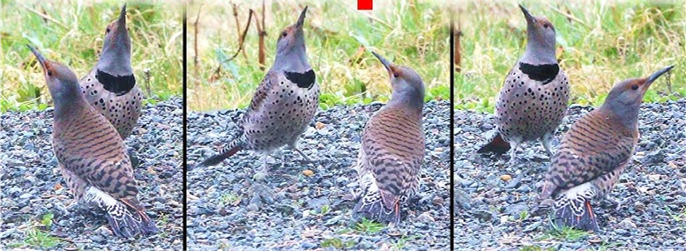
Ever thought about supplying eggshells to help wild birds during nesting season? To get started rinse the eggshells with warm water and then either bake them in the oven—250 degrees for 10 minutes—or you can boil them for 10-15 minutes. Baking or boiling the eggshells before putting them out for the birds is a crucial step because it kills bacteria such as salmonella.
Once the eggshells have been sterilized, you can crush them up and add them to your seed or seed blend, or even toss them on the ground.
Mother birds need calcium to provide solid eggshells and strong bones for baby nestlings.
Turkey trot: Wild birds venture into Kananaskis
Repeated sightings of at least one Wild turkey—a hen—have been reported in Peter Lougheed Provincial Park, a fair distance from typical turkey range in the province.
It is about 50-60 km from the nearest location where turkeys are released and it is not banded, so it isn’t one that was released , but could possibly have been released from a local landowner or it could be a young turkey from one that was released.
The Alberta Conservation Association (ACA) is managing a 10-year plan to relocate Wild turkeys from other regions over the next decade to establish a sustainable population in Alberta.
The conservation organization has been releasing birds over the last two winters, into early spring. Working with landowners, Wild turkeys are dispersed from Black Diamond south to near Waterton Lakes National Park.
Wild turkeys are not native to Alberta, but historically have been found across the eastern United States and up into Ontario.
By the early 1900s, overhunting and habitat destruction had wiped out Wild turkeys from much of their original North American range.
Habitat restoration and reintroduction efforts have led to Wild turkeys re-occupying their original range and establishing population in new areas. The birds now occupy all 48 lower U.S. states, as well as British Columbia, Alberta, Saskatchewan, Manitoba and Ontario.
Options for shopping at the Wild Bird Store
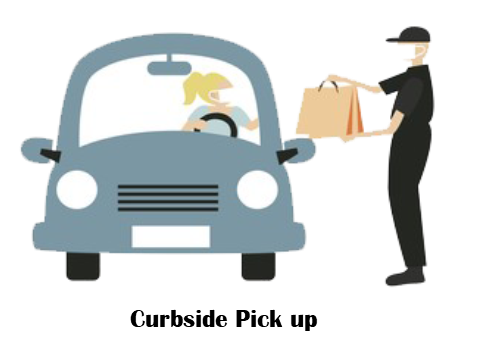
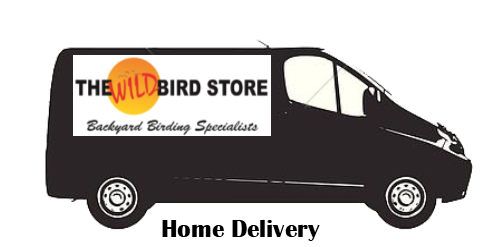
PLEASE NOTE: WE WILL BE BACK TO EVERY WEEK DELIVERY ON THURSDAYS STARTING OCTOBER 3/24
THE DELIVERY CHARGE WILL BE $10. MINIMUM $25 ORDER FOR DELIVERY.
Store hours are:
10:00am to 5:00pm Monday through Saturday
We offer a discount if you return your 20 LB or 40 LB seed bags so that we can re-use them (sorry—not the Mother Nature bags which we cannot re-use), suet ball containers, or if you bring your own container or bag to fill . This discount is in addition to any other discount offered.
Write a Google review on your experience at The Wild Bird Store, and as a thank you, we will give you 100 customer loyalty points ($5.00 value). To get a promo code, kindly email info@wildbirdstore.ca
(one Google review per customer)
Earn 200 customer loyalty points ($10.00 value) by referring a friend, acquaintance or fellow birder.
Please visit the store to get a promo code.
Combining our Seniors 10% discount with the Loyalty Program. (Excludes “sales” items, books & optics).
Discount for membership 10% discount for members of Fish Creek Park, AIWC, Priddis Golf Club, Nature Calgary, Sandy Cross Conservation, Springbank Garden Club and Millarville Horticultural Society. Must present valid membership card at time of purchase.
Discount for Military Members & Veterans 10% discount on
purchases in-store or on Mobile Seed Truck (sorry—excludes “sales”
items, books, optics and consignment items)
Does your Aspects or Squirrel Buster feeder need some replacement parts?
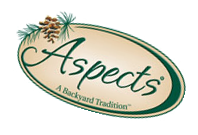
Did you know that we can repair/replace parts and make it look like brand new?

5901 3rd Street S.E.,
Calgary, AB T2H 1K3
email: info@wildbirdstore.ca
(403) 640 2632
The Store is open Monday through Saturday 10:00am to 5:00pm
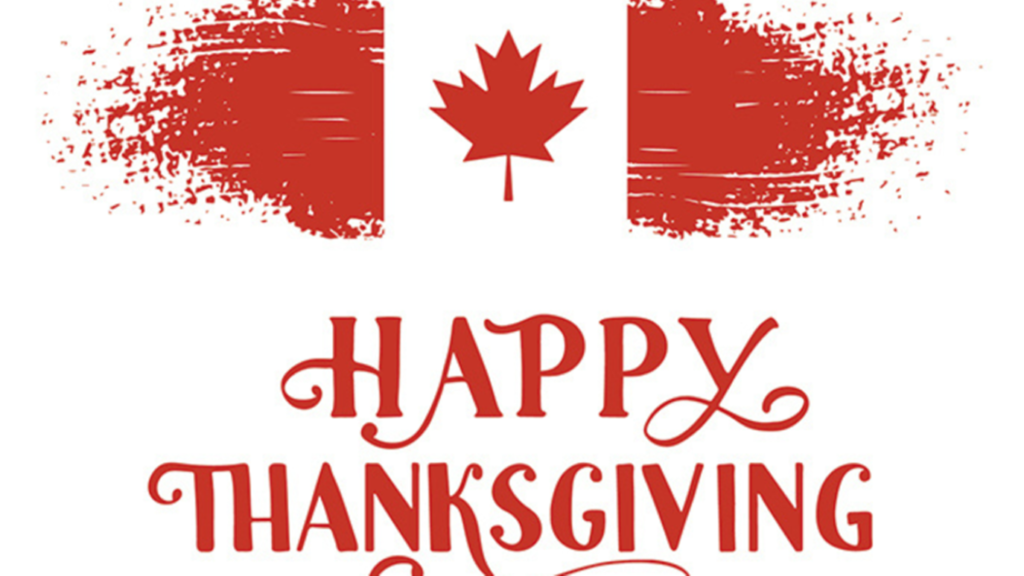
The Wild Bird Store will be closed on Monday, October 14 to celebrate Thanksgiving.
We are CLOSED Sundays, and ALL Statutory holidays for Faith, Family and Friends.
We still offer curbside pickup every day we are open and delivery service on every other Thursday.
FOLLOW US ON:
Facebook @thewildbirdstoreyyc
Twitter @wildbirdstoreyyc
Go to YouTube, type in the search bar “The Wild Bird Store” to watch our videos and to help us become more visible . Be sure to click on “Subscribe” before you leave the page.

